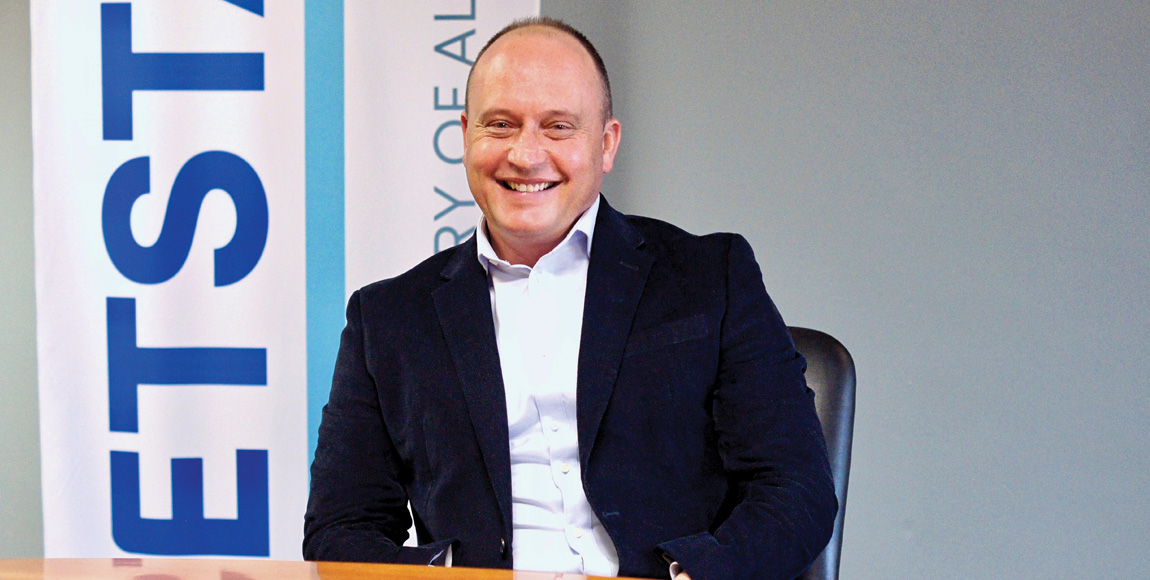Netstar’s expanding horizons

Since pioneering South Africa’s stolen vehicle tracking and recovery industry in 1994, Netstar has morphed into an innovative, global technology company that sets the pace in a number of countries. Under the leadership of CEO Pierre Bruwer, the entity’s horizons are expanding even further. WYNTER MURDOCH reports
It was about 25 years ago that Netstar, now a subsidiary of international electronics giant Altron, began life as Advanced Tracking and Information Systems (ATIS), a start-up founded on a relationship formed between a South African and a Zimbabwean-born Canadian.
Martin van Breda met Conrad Walker at an international conference at which vehicle tolling concepts were in the spotlight. Walker was there because the company for which he worked, Austec, was involved in monitoring the movement of wildlife in Canada and was looking to expand its operations into vehicle tracking.
Van Breda worked for BKS Engineering, a Pretoria-based civil engineering company with an affiliation to Tolcon. He was looking for insights into technology that could be applied to toll services in South Africa. The two struck up a conversation, and Walker decided to visit the country to see if his concepts could be adapted to suit the applications that BKS envisaged.
While here, he suggested to Van Breda that stolen vehicle recovery could prove more profitable than toll-gate monitoring and the two formed ATIS, deciding on a company name that was deliberately generalised to cater for whatever market sector they could penetrate.
At the time, mobile-phone technology was primitive and GPS devices expensive, so the tracking system ATIS developed was purely radio-frequency (RF) based and similar to the one used to track wildlife. The initial transmitting network they set up – along William Nicol Drive in Johannesburg – was sparse and was erected purely to demonstrate the system’s potential to anyone who was interested.
There were not many takers. Persistence paid off, however, and eventually the South African Police Services and a number of insurance companies expressed interest in the project. That was enough to convince BKS Engineering and international conglomerate De Leuw Cather to finance a limited radio network in the Pretoria-Witwatersrand-Vereeniging region.
The original grid, which remains integral to today’s much expanded, high-technology counterpart, comprised about 10 high sites (transceivers mounted on structures such as water towers), supplemented by myriad “signposts” (less powerful equivalents fixed to street poles and traffic lights).
“Netstar has come a long way since those days,” says CEO Pierre Bruwer. “When it opened its doors, ATIS had 13 staff members. Now we have over 1 200 employees and offices in many parts of the world, with more than 1,2-million devices active on a global level.”
He says that having morphed from being purely a stolen vehicle recovery business, Netstar is now the biggest consumer of cloud data on the African continent, its activities stretching into a multitude of data service offerings that include anything from vehicle telematics and autonomous-drive vehicles, to methods of increasing productivity and heightening efficiency – all based on inputs received from an increasingly connected world.
“When ATIS started, its focus was on finding a solution to a particular problem. That attitude hasn’t changed, but we’re solving problems in areas that our founding fathers are unlikely to have thought possible. We’re still as pioneering now as we were then, and our investment in research and development is massive.
“What we’ve learned from the mobile industry – and what we are still learning – indicates that the pace of change of the Fourth Industrial Revolution is accelerating. From this perspective, Netstar remains at the cutting edge. All of our learnings have played a role in the company’s global expansion – and we lead the field in many countries.”
One of the most significant recent developments for the company in South Africa encompasses an agreement with Toyota South Africa Motors (TSAM) regarding a telematics application developed by Netstar – which includes in-car Wi-Fi – for installation in all new Toyota and Lexus models sold in the country.
Known as Toyota Connect, the technology enables access to a number of convenience, connectivity and safety applications for drivers of vehicles that bear the nameplates. “About 30 000 vehicles have been fitted with the technology since the partnership came into effect in September,” says Bruwer. “We expect that, within four years, the number will have increased to 600 000.”
He adds that Netstar also fits locally developed and produced telematics technology to a number of vehicles manufactured by Toyota in Malaysia, and that the company has plans to extend its partnerships with original equipment manufacturers in other countries – particularly in Europe and the United Kingdom.
Bruwer says that in Australia, Netstar has entered into agreements with 120 council authorities to monitor the movements of fleet vehicles with a view to driving efficiencies, not only from a cost per kilometre perspective through telematics services, but also, for instance, by identifying the location of potholes on roads, or by measuring an amount of grass cut on a verge.
“Netstar owns that space,” he says, proudly. “The envelope is continuously being pushed. Vision is important, but our job is to deliver technology that matters, providing information of relevance to our customers and solutions that add value. Relentless analysis of data is at the core – but to be successful the basics have to be right. That’s where the brilliance of the Netstar business lies.”
The company has won many honours for its technology, including awards from the prestigious Da Vinci Institute in recognition of innovation in developing a collision-proximity avoidance system for autonomous vehicles used in mines, and another for creating a big-data platform associated with applications involving artificial intelligence. “From a technological perspective we are investing heavily in the future,” says Bruwer. “For instance, one of the projects we are working on at the moment involves finding ways to keep occupants of autonomous vehicles entertained while they travel.”
Another project involves the precise monitoring of individual items of cargo carried by trucks, so that even the smallest parcel can be traced to an exact location in the event that it is stolen or misplaced. “While Netstar has a 100-percent success rate in recovering stolen or hijacked trucks, goods have a habit of disappearing quickly. We are developing a tracking system that will be able to trace every item, no matter where it ends up.”
Similarly, the company is involved in a large-scale vehicle telematics project in India, which Bruwer expects to be rolled out in the first half of next year. It is also growing its footprint in Africa, which he believes, like India, is under-penetrated in terms of fleet management and stolen vehicle recovery systems.
“For us, Africa remains a strategic objective,” he says. “We have a commanding presence in the Southern African Development Community (SADC) region and in East Africa, but we would like to expand our operations, particularly in the fleet-management sector. These days, it’s difficult to run a sustainable fleet without telematics. The benefits are significant.”
His wish for South Africa in 2020? “The objective will be to grow the economy, and the country has proved itself adept at taking up challenges and delivering. My wish is for that spirit to continue…”
Published by
Focus on Transport
focusmagsa




